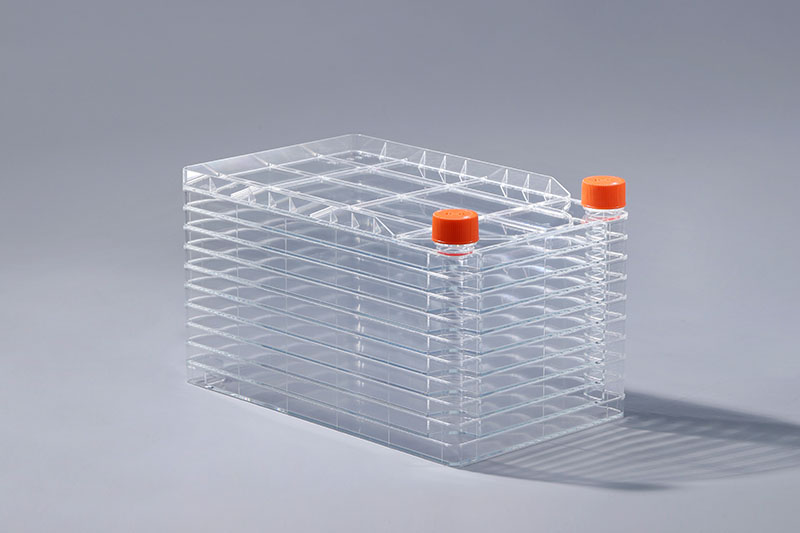Ao cultivar células usando um cell factory, ele é suscetível a vários fatores. Como temperatura, valor de PH, ambiente gasoso, etc., dos quais a pressão osmótica também é um aspecto muito importante.
As células em soluções hipertônicas ou hipotônicas podem encolher ou inchar e romper imediatamente. Portanto, a pressão osmótica é uma das condições importantes para o cultivo de células in vitro. A manutenção da pressão osmótica de células de tecidos de mamíferos e outros animais in vitro está principalmente relacionada ao NaCl, mas a relação da pressão osmótica de outros dielétricos não pode ser ignorada. A pressão osmótica é proporcional ao número de moléculas e íons do soluto por unidade de volume de solvente. Por esta razão, é muito importante controlar o equilíbrio iônico no meio de cultura em certa proporção e manter a pressão osmótica normal. Isso não é apenas para manter a tensão celular, mas também para regular o metabolismo das células. Como o transporte de íons extracelular e a concentração de íons alteram o transporte de outros nutrientes (como aminoácidos, sacarose, etc.), isso afeta diretamente o sistema básico de síntese das células. tipo e raça de células. A pressão osmótica do plasma humano é de 290 mmol/L, que é considerada a pressão osmótica ideal para o cultivo de células humanas in vitro. A pressão osmótica das células de mamífero é geralmente de 290 a 300 mmol/L. Os fibroblastos do pulmão embrionário humano são 250-325 mmol/L, e os camundongos são cerca de 310 mmol/L. Em aplicações práticas, a pressão osmótica de 260-320 mmol/L é adequada para a maioria das células. Em suma, a pressão osmótica afeta diretamente o crescimento normal das células. Ao usar a fábrica de células para cultivar células, é necessário manter uma pressão osmótica adequada de acordo com as condições das células, de modo a garantir o bom crescimento das células.
The ideal osmotic pressure of cell factory cultured cells varies with the type and race of cells. The osmotic pressure of human plasma is 290 mmol/L, which is considered to be the ideal osmotic pressure for culturing human cells in vitro. The osmotic pressure of mammalian cells is generally 290 to 300 mmol/L. Human embryonic lung fibroblasts are 250-325 mmol/L, and mice are about 310 mmol/L. In practical applications, the osmotic pressure of 260-320 mmol/L is suitable for most cells.
To sum up, the osmotic pressure directly affects the normal growth of cells. When using the cell factory to cultivate cells, it is necessary to maintain an appropriate osmotic pressure according to the conditions of the cells, so as to ensure the good growth of the cells.
The FAI climbed 5.9 percent year-on-year in the first 11 months of 2018, quickening from the 5.7-percent growth in Jan-Oct, the National Bureau of Statistics (NBS) said Friday in an online statement.
The key indicator of investment, dubbed a major growth driver, hit the bottom in August and has since started to rebound steadily.
In the face of emerging economic challenges home and abroad, China has stepped up efforts to stabilize investment, in particular rolling out measures to motivate private investors and channel funds into infrastructure.
Friday's data showed private investment, accounting for more than 60 percent of the total FAI, expanded by a brisk 8.7 percent.
NBS spokesperson Mao Shengyong said funds into weak economic links registered rapid increases as investment in environmental protection and agriculture jumped 42 percent and 12.5 percent respectively, much faster than the average.
In breakdown, investment in high-tech and equipment manufacturing remained vigorous with 16.1-percent and 11.6-percent increases respectively in the first 11 months. Infrastructure investment gained 3.7 percent, staying flat. Investment in property development rose 9.7 percent, also unchanged.
 English
English



















































